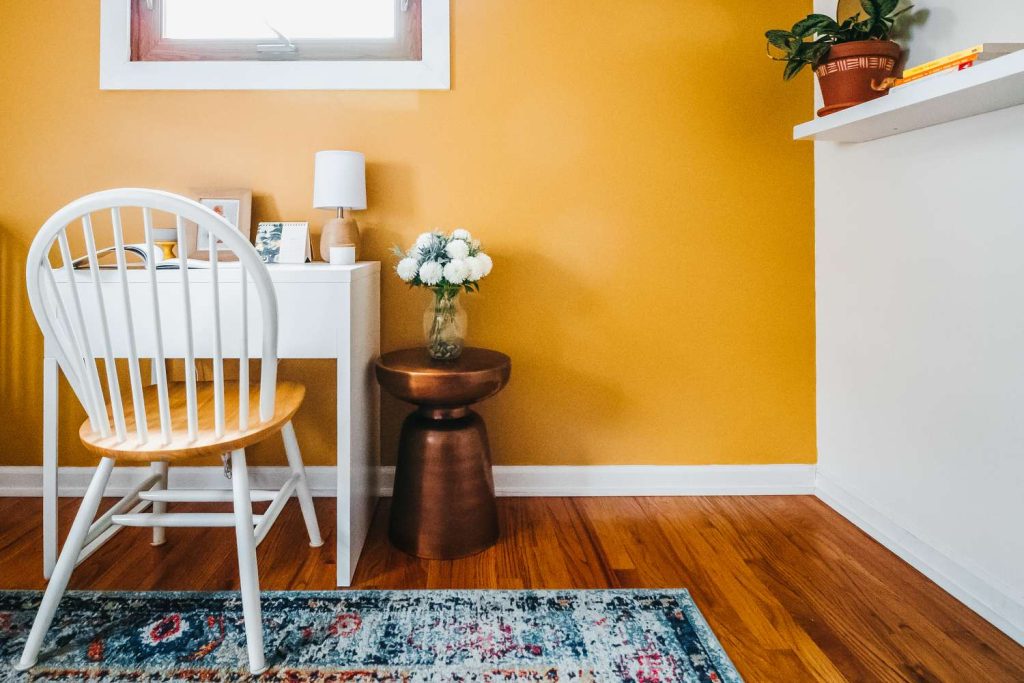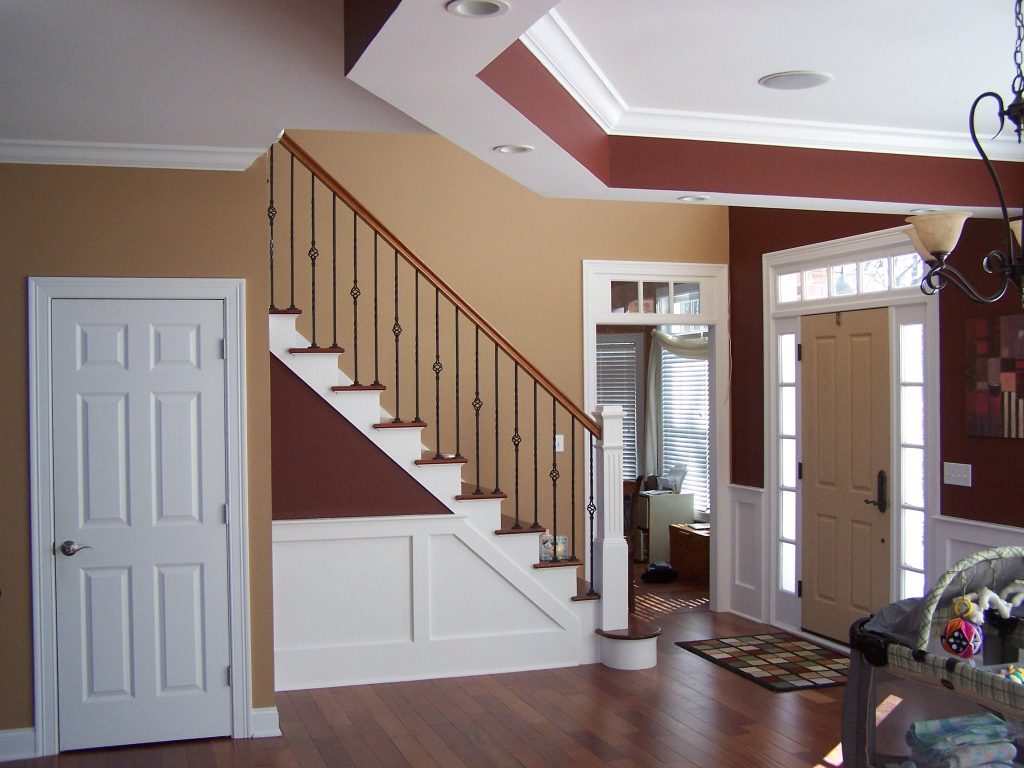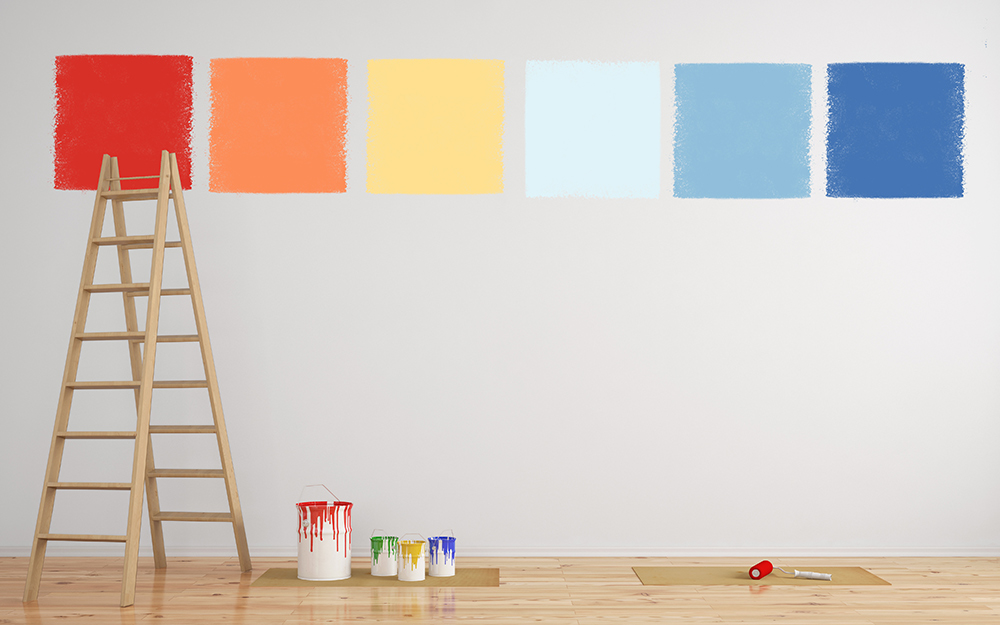When it comes to home renovations that deliver the highest return on investment, choosing the right interior paint colors is one of the most cost-effective ways to boost your property’s market appeal. According to real estate experts, strategic color choices can increase your home’s value by 3-7%, making this simple upgrade worth thousands of dollars.
Why Paint Color Matters for Home Value
Interior paint color affects buyer perception more than any other single design element. The right colors create an emotional connection, make spaces feel larger and brighter, and help potential buyers envision themselves living in the space. Poor color choices, on the other hand, can make rooms feel cramped, outdated, or require immediate repainting – a red flag for many buyers.
The Psychology Behind Value-Adding Colors
Understanding color psychology is crucial when selecting paint that adds value. Neutral colors create a sense of calm and sophistication, while also providing the flexibility buyers crave to personalize spaces with their own décor and furnishings.
Colors that increase perceived value:
- Light, warm neutrals make spaces feel welcoming and expensive
- Cool grays suggest modernity and cleanliness
- Soft whites create an airy, spacious feeling
- Muted earth tones provide warmth without overwhelming
Top Value-Adding Paint Colors by Room
Living Areas and Open Spaces
Best choices: Warm grays, greige (gray-beige blend), and soft whites
- Sherwin Williams Agreeable Gray (SW 7029) – The most popular choice among real estate professionals
- Benjamin Moore Classic Gray (OC-23) – Timeless and sophisticated
- Behr Swiss Coffee (12) – Warm white that works in any lighting
These colors photograph well for online listings and appeal to the broadest range of potential buyers.
Kitchen and Dining Areas
Best choices: Clean whites and light, warm neutrals
- Benjamin Moore White Dove (OC-17) – Pure white that isn’t stark
- Sherwin Williams Creamy (SW 7012) – Subtle warmth without yellow undertones
- Farrow & Ball Skimming Stone (No. 241) – Premium neutral with depth
Kitchen paint should complement cabinetry and create a fresh, clean atmosphere that suggests good maintenance.
Bedrooms
Best choices: Soft, calming neutrals that promote rest
- Benjamin Moore Moonshine (OC-56) – Gentle gray with blue undertones
- Sherwin Williams Misty (SW 6232) – Barely-there blue-gray
- Behr Silky White (PPU18-08) – Warm white with subtle pink undertones
Master bedrooms can handle slightly more color than other spaces, but stick to sophisticated, hotel-like tones.
Bathrooms
Best choices: Clean whites and spa-like neutrals
- Benjamin Moore Chantilly Lace (OC-65) – Crisp, pure white
- Sherwin Williams Sea Salt (SW 6204) – Subtle blue-green that feels fresh
- Farrow & Ball Pavilion Gray (No. 242) – Sophisticated blue-gray
Bathroom colors should enhance natural light and create a clean, luxurious feeling.

Colors to Avoid for Maximum Value
Certain colors can actually decrease your home’s appeal and market value:
High-risk color choices:
- Bold, personal colors (bright yellow, orange, purple)
- Dark colors that make rooms feel smaller
- Trendy colors that may look dated quickly
- Colors with strong undertones that clash with fixed elements
The biggest mistakes:
- Painting every room a different color
- Using colors that don’t flow well together
- Choosing colors based solely on personal preference
- Ignoring the home’s architectural style and era
How to Test Colors Before Committing
The 24-hour rule: Paint large swatches (at least 2×2 feet) on different walls and observe them at various times of day. Colors can look dramatically different in morning light versus evening artificial light.
Consider the whole home flow: Colors should transition smoothly from room to room. Stand in doorways and hallways to ensure colors complement rather than clash with adjacent spaces.
Factor in fixed elements: Consider flooring, countertops, and built-in elements that won’t be changed. Your paint color should harmonize with these permanent features.
Professional Tips for Maximum Impact
Lighting Considerations
Natural light direction affects color perception:
- North-facing rooms: Need warm colors to counteract cool light
- South-facing rooms: Can handle cooler colors due to warm natural light
- East-facing rooms: Best with warm colors that glow in morning light
- West-facing rooms: Cool colors balance intense afternoon sun
Quality Matters
Higher-quality paint not only looks better but also suggests better maintenance to potential buyers. Premium brands like Benjamin Moore Advance, Sherwin Williams ProClassic, or Farrow & Ball create a noticeably superior finish that photographs beautifully and feels more expensive.
Sheen Selection
- Flat/Matte: Best for ceilings and low-traffic areas
- Eggshell: Perfect for living areas and bedrooms
- Satin: Ideal for kitchens, bathrooms, and trim
- Semi-gloss: Best for high-moisture areas and frequently cleaned surfaces
The ROI of Strategic Paint Choices
According to the National Association of Realtors, interior painting delivers an average ROI of 107%, meaning you typically recoup more than you spend. Here’s the breakdown:
Average costs and returns:
- Investment: $1,500-$4,000 for whole home interior painting
- Potential value increase: $3,000-$8,000
- Time to complete: 3-7 days
- Appeal to buyers: 89% of agents recommend neutral paint colors
Current Color Trends That Add Value
2024-2025 trending neutrals that increase value:
- Warm minimalism: Soft, organic neutrals inspired by natural materials
- New traditionalism: Updated classics like soft grays and warm whites
- Biophilic colors: Earth-inspired tones that connect with nature
Colors gaining popularity:
- Mushroom gray
- Warm putty
- Soft linen white
- Sage green (accent walls only)

Common Mistakes That Reduce Value
Costly errors to avoid:
- Using too many different colors throughout the home
- Choosing colors that date the home to a specific era
- Painting over problems instead of fixing them first
- Skipping primer or using low-quality paint
- Ignoring the home’s architectural character
Implementation Strategy
Phase 1: Planning (Week 1)
- Assess current colors and condition
- Research neighborhood preferences and price points
- Select 3-4 coordinating colors for the entire home
- Purchase samples and test in different lighting
Phase 2: Preparation (Week 2)
- Clean and repair all surfaces
- Prime where necessary
- Protect floors and furnishings
- Gather quality tools and materials
Phase 3: Execution (Week 3-4)
- Start with ceilings and work down
- Maintain wet edges for consistent coverage
- Apply thin, even coats
- Allow proper drying time between coats
Conclusion
Choosing interior paint colors that increase home value isn’t about following every trend – it’s about creating a sophisticated, neutral backdrop that allows potential buyers to imagine their own lives in your space. By focusing on timeless, well-coordinated neutrals and paying attention to quality application, you can significantly boost your home’s market appeal while enjoying a beautiful, updated interior.
The key is striking the right balance between personal style and broad market appeal. When done correctly, strategic paint color selection becomes one of the highest-return investments you can make in your home.
Remember: the goal isn’t to create a space that’s completely devoid of personality, but rather to establish a sophisticated foundation that enhances your home’s best features while appealing to the widest possible range of future buyers.
